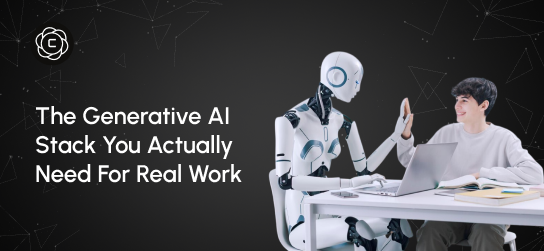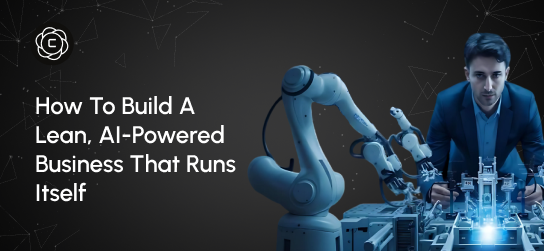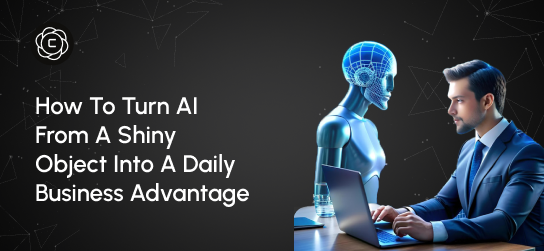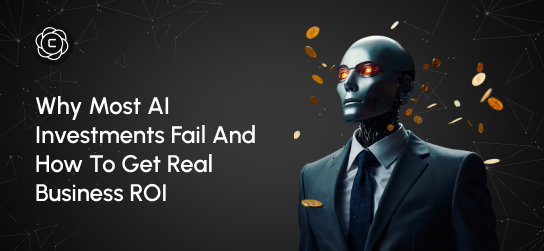Learning Center
Master AI creativity with our comprehensive guides, tutorials, and expert insights. From beginner basics to advanced techniques.
The Fastest Way to Build Business Leverage in 2025 (Hint: It's Not Hiring People)

Introduction
I've discovered something that challenges everything we thought we knew about business leverage: the fastest-growing companies didn't hire their way to success, they automated their way there.
While traditional businesses burn through cash hiring expensive talent, smart entrepreneurs are building AI-powered systems that deliver 10x the output at 1/10th the cost. This isn't about replacing human creativity—it's about amplifying human intelligence through strategic automation.
The companies that master this approach aren't just saving money. They're moving faster, scaling smarter, and building competitive moats that traditional hiring models simply cannot match.
The Traditional Leverage Model Is Broken
Most entrepreneurs still think about leverage the old way: hire smart people, delegate tasks, and hope for exponential growth. This model worked when talent was abundant and technology was limited. Today, it's a recipe for burning cash without building sustainable advantage.
I've watched countless startups raise funding, hire aggressively, and wonder why their growth stalled despite having impressive team sizes. The problem isn't the people—it's the fundamental assumption that more humans automatically equal more leverage.
Traditional hiring creates three critical problems that AI-powered leverage solves: scalability bottlenecks, knowledge silos, and operational complexity. Every new hire adds coordination overhead, communication friction, and management burden that often negates the productivity gains.
Modern leverage comes from systems that work 24/7, never get tired, don't require benefits, and can be replicated instantly across unlimited projects. The businesses that understand this principle are building unassailable competitive advantages.
Why Smart Entrepreneurs Choose AI Over Additional Headcount
The most successful business leaders I advise have fundamentally rethought their approach to scaling operations. Instead of asking "Who should I hire?" they ask "What systems can I build?"
This shift reflects three key insights about modern business leverage:
Speed Advantage: AI systems can be deployed in days or weeks, while hiring the right people takes months. In fast-moving markets, this speed difference often determines who captures market share first.
Consistency Multiplier: Human performance varies based on mood, energy, and circumstances. AI systems deliver consistent quality output regardless of external factors, creating predictable business outcomes.
Infinite Scalability: Adding one more person increases capacity linearly. Adding one more AI system increases capacity exponentially. This mathematical advantage compounds over time into insurmountable competitive positioning.
The entrepreneurs who recognize these advantages early are building businesses that their traditionally-scaled competitors cannot match on speed, cost, or consistency.
The Psychology Behind Effective Leverage Systems
Understanding how leverage actually works reveals why AI-powered approaches outperform human-centered models. After studying hundreds of successful implementations, three psychological principles consistently drive superior results:
Cognitive Load Reduction: Great leverage systems handle routine decisions automatically, freeing human intelligence for strategic thinking. When entrepreneurs stop managing day-to-day operations, they can focus on growth opportunities and competitive positioning.
Decision Fatigue Elimination: Every business decision depletes mental energy. AI systems make thousands of micro-decisions automatically, preserving human cognitive resources for high-impact choices that actually move the business forward.
Flow State Optimization: The most productive entrepreneurs spend maximum time in deep work rather than context-switching between management tasks. Automated systems create the consistency and predictability that enables sustained focus on value-creating activities.
These psychological benefits explain why AI-leveraged entrepreneurs often outperform larger teams with more resources. They're operating with clearer minds and better focus while their competition drowns in operational complexity.
Essential Leverage Systems Every Modern Business Needs
After analyzing the most successful AI-powered businesses, five automation categories consistently deliver the highest return on investment:
Content Creation and Marketing Automation
Content remains the primary driver of business growth, but manual content creation doesn't scale efficiently. Smart businesses use AI to generate high-quality content at scale while human expertise ensures strategic alignment and brand consistency.
Crompt's Content Writer enables businesses to produce weeks of content in hours, maintaining quality while achieving unprecedented output volumes. This approach transforms content from a bottleneck into a competitive advantage.
Customer Communication and Support Systems
Customer service traditionally requires large teams to handle growing volumes. AI-powered communication systems provide instant, accurate responses while escalating complex issues to human specialists only when necessary.
Automated customer communication creates better customer experiences while reducing operational costs. Customers receive faster responses, and businesses maintain higher satisfaction scores without proportional staff increases.
Data Analysis and Business Intelligence
Manual data analysis limits how quickly businesses can identify opportunities and respond to market changes. AI systems process vast datasets continuously, surfacing insights that inform strategic decisions in real-time.
Operational Process Automation
Administrative tasks consume enormous amounts of time without creating direct value. Invoice processing, appointment scheduling, email management, and routine communications can be automated completely, freeing human attention for revenue-generating activities.
Sales and Lead Generation Systems
Traditional sales approaches require linear increases in salespeople to generate proportional revenue growth. AI-powered sales systems qualify leads, nurture prospects, and identify buying signals automatically, allowing human salespeople to focus on closing high-probability opportunities.
How AI-Powered Leverage Transforms Different Business Models
The impact of AI leverage varies across business types, but the fundamental principle remains consistent: automate routine tasks to amplify human strategic capability.
Service-Based Businesses: AI handles initial client consultations, project scoping, and routine deliverables while human experts focus on strategic guidance and relationship building. This model enables service businesses to serve more clients without proportional increases in expert staff.
E-commerce Operations: Automated inventory management, customer service, marketing campaigns, and sales processes allow e-commerce businesses to scale revenue without scaling operational complexity. AI systems handle the volume while humans focus on product development and strategic partnerships.
Content and Media Companies: AI generates, optimizes, and distributes content at scale while human creators focus on strategic direction, brand development, and high-value content that requires creativity and expertise.
Professional Services: Document generation, research, analysis, and routine consulting tasks become automated, allowing professionals to serve more clients while focusing on high-value strategic advisory work.
When I started helping businesses implement Crompt's Business Report Generator for automated analytics, average client capacity increased 300% without additional analysts. The key was positioning AI as an intelligence amplifier rather than a staff replacement.
Real-World Success Stories: Businesses That Built Leverage Without Hiring
Marcus runs a digital marketing agency that grew from $50K to $500K monthly revenue without hiring a single additional employee. His secret? Systematic automation of everything except strategic thinking and client relationships.
His transformation included:
- Automated content creation using AI tools for research, writing, and optimization
- AI-powered social media scheduling and engagement monitoring
- Automated reporting systems that generate client dashboards in real-time
- Intelligent lead qualification systems that identify high-probability prospects
The result? His three-person team now delivers results that traditionally required 15-20 employees, while maintaining higher client satisfaction and better profit margins.
Key Elements That Drive His Success:
- System-First Thinking: Every new process gets automated before it becomes a hiring justification
- Quality Amplification: AI handles volume while humans ensure strategic alignment and quality control
- Continuous Optimization: Regular analysis of which tasks can be further automated or improved
- Client Value Focus: Automation enables better service delivery, not just cost reduction
Step-by-Step Implementation Guide
Step 1: Audit Your Current Operations
Identify which activities in your business consume time without directly creating value. These routine, repetitive tasks represent your highest-impact automation opportunities.
Create three categories: "Must Be Human," "Could Be Automated," and "Should Be Eliminated Entirely." Focus your automation efforts on the second category while reconsidering the third.
Step 2: Prioritize Based on Impact and Complexity
Not all automation opportunities are created equal. Prioritize systems that free up the most human time while requiring the least complex implementation.
Use Crompt's Task Prioritizer to systematically evaluate which automation projects will deliver the highest return on your time investment.
Step 3: Implement Incrementally
Start with one system and perfect it before moving to the next. Rushed automation often creates more problems than it solves. Focus on getting each system working smoothly before expanding your automation scope.
Step 4: Measure and Optimize
Track both efficiency gains and quality outcomes. The goal isn't just doing things faster—it's doing things better while freeing human attention for higher-value activities.
Use Crompt's Excel Analyzer to track automation performance metrics and identify optimization opportunities.
Common Implementation Mistakes That Destroy Leverage
Automating the Wrong Things: Not all tasks should be automated. Activities requiring creativity, relationship building, or strategic thinking often lose value when automated. Focus automation on routine, predictable processes.
Neglecting Quality Control: Automated systems require human oversight to maintain quality standards. Implementing automation without quality assurance creates efficiency at the expense of effectiveness.
Over-Complicating Initial Implementations: Simple automation that works reliably beats complex systems that break frequently. Start with straightforward implementations and add sophistication gradually.
Ignoring Human Resistance: Team members may resist automation if they perceive it as threatening their job security. Frame automation as capability enhancement rather than replacement to maintain team buy-in.
Failing to Reinvest Freed Time: Automation only creates leverage if the freed human time gets redirected toward higher-value activities. Without strategic reallocation, automation becomes cost-cutting rather than growth-enabling.
Advanced Leverage Strategies for Competitive Advantage
The most sophisticated businesses don't just automate individual tasks—they create automated workflows that handle entire business processes end-to-end.
Integrated System Architecture: Connect multiple automation tools so they work together seamlessly. Customer data flows automatically from lead generation through sales, delivery, and follow-up without human intervention.
Predictive Automation: Use AI to anticipate needs and take action before problems occur. Inventory systems that automatically reorder based on sales patterns, or customer service systems that proactively address common issues.
Adaptive Learning Systems: Implement automation that improves its own performance over time. These systems analyze their outputs and optimize their processes continuously without human involvement.
Cross-Platform Integration: Connect automation across all business systems so data flows seamlessly and decisions get made with complete information. Use Crompt's Data Extractor to integrate information from multiple platforms automatically.
Measuring and Scaling Your Leverage Systems
Track metrics that reveal true leverage creation, not just operational efficiency:
Revenue Per Employee: The ultimate leverage metric. AI-powered businesses often achieve 3-5x higher revenue per team member than traditionally-scaled competitors.
Time to Market: How quickly can you launch new products, services, or campaigns? Automated systems dramatically reduce implementation time for new initiatives.
Scalability Coefficient: How much additional capacity can you create without proportional resource increases? High-leverage businesses can double output without doubling costs.
Decision Speed: How quickly can your business respond to opportunities or challenges? Automated intelligence gathering and analysis enable faster strategic decisions.
Use Crompt's Sentiment Analyzer to monitor customer satisfaction as you scale through automation, ensuring efficiency gains don't compromise service quality.
Building Sustainable Competitive Advantages Through AI Leverage
The most successful businesses use AI leverage to create competitive moats that traditional hiring models cannot replicate:
Speed Advantage: Automated systems enable faster product development, marketing campaigns, and customer service responses than human-dependent competitors.
Cost Structure Optimization: Lower operational costs create pricing flexibility and higher profit margins that fund further innovation and market expansion.
Consistency Differentiation: Automated systems deliver consistent quality experiences that build stronger customer loyalty and brand reputation.
Innovation Capacity: Freed human resources can focus on strategic innovation rather than operational management, creating sustainable competitive advantages.
The Future of AI-Powered Business Leverage
Business leverage is evolving toward fully integrated AI systems that handle complete business functions rather than individual tasks. The companies that master this integration will dominate their markets through superior speed, efficiency, and innovation capacity.
Emerging opportunities include AI-powered product development, automated market research, predictive customer behavior analysis, and intelligent resource allocation. Forward-thinking entrepreneurs are already building these capabilities while their competition debates whether to embrace AI.
Your Next Steps
Identify the single most time-consuming routine process in your business and research how AI tools can automate or enhance it. Use Crompt's AI tools to experiment with different automation approaches and measure the results.
Start small, measure carefully, and scale gradually. The goal is building sustainable systems that create genuine leverage rather than impressive technology implementations that don't improve business outcomes.
The combination of human strategic thinking and AI operational excellence creates unprecedented opportunities for building business leverage faster and more effectively than traditional hiring models ever could.
Ready to build genuine business leverage through AI automation? Explore Crompt's comprehensive AI solutions and discover how strategic automation can transform your business operations while creating sustainable competitive advantages in the modern marketplace.
Table of Content
- Introduction
- The Traditional Leverage Model Is Broken
- Why Smart Entrepreneurs Choose AI Over Additional Headcount
- The Psychology Behind Effective Leverage Systems
- Essential Leverage Systems Every Modern Business Needs
- How AI-Powered Leverage Transforms Different Business Models
- Real-World Success Stories: Businesses That Built Leverage Without Hiring
- Step-by-Step Implementation Guide
- Common Implementation Mistakes That Destroy Leverage
- Advanced Leverage Strategies for Competitive Advantage
- Measuring and Scaling Your Leverage Systems
- Building Sustainable Competitive Advantages Through AI Leverage
- The Future of AI-Powered Business Leverage
- Your Next Steps
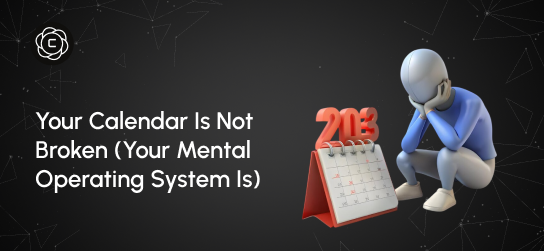
Your Calendar Is Not Broken (Your Mental Operating System Is)
Last month, I watched a founder spend three hours reorganizing his calendar app for the fourth time this year. Different colors, new categories, smarter blocking strategies. By week two, he was back to the same chaotic pattern: overcommitted, constantly running late, and feeling like his day controlled him instead of the other way around. The problem wasn't his calendar. It was the mental operating system running underneath it. Calendar issues aren’t about tools; they’re about how you think about time. They download new apps, try productivity methods, and wonder why nothing sticks. Meanwhile, the real issue sits in how their brain processes time, priorities, and commitments.
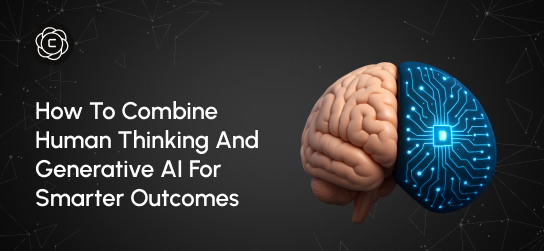
How to Combine Human Thinking and Generative AI for Smarter Outcomes
Last Tuesday, I watched two product managers go head-to-head on the same challenge. Same tools. Same data. Same deadline. But the way they used AI couldn’t have been more different and the results made that difference unmistakable. One delivered a generic solution, familiar and easily replicated. The other crafted a proposal that felt thoughtful, grounded, and strategically distinct. Their CEO approved it for implementation within minutes. The gap wasn’t technical skill or AI proficiency. It was their thinking architecture, the way they framed the problem, used AI to explore, and layered in human context to guide the output.
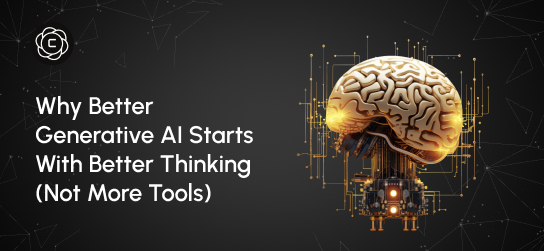
Why Better Generative AI Starts With Better Thinking (Not More Tools)
Four months ago, I watched a marketing director spend $400 on AI subscriptions only to produce the same mediocre content she'd always created. Her problem wasn't the tools. It was her approach. This scenario plays out everywhere. Professionals accumulate AI subscriptions like digital trophies, believing more tools equal better results. They're missing the fundamental truth: generative AI amplifies your thinking, not replaces it. The best AI users I know don't have the most tools. They have the clearest thinking processes.
Stay Updated
Get the latest AI insights, tutorials, and feature updates delivered to your inbox.

